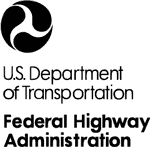U.S. Department of Transportation
Federal Highway Administration
1200 New Jersey Avenue, SE
Washington, DC 20590
202-366-4000
Federal Highway Administration Research and Technology
Coordinating, Developing, and Delivering Highway Transportation Innovations
| FACT SHEET |
| This fact sheet is an archived publication and may contain dated technical, contact, and link information |
| Publication Number: FHWA-HRT-09-065 Date: June 2010 |
Publication Number: FHWA-HRT-09-065 Date: June 2010 |
PDF files can be viewed with the Acrobat® Reader®
| Crack-free concrete? Although much progress has been made in reducing concrete's propensity to crack, the goal remains elusive. A novel approach to this problem is the focus of "High-Performance Stress-Relaxing Cementitious Composites for Crack-Free Pavements and Transportation Structures," an Exploratory Advanced Research (EAR) Program project launched by the Federal High-way Administration (FHWA) in 2008 and conducted at Texas A&M University's Texas Transportation Institute. |
|
|
Concrete transportation structures are subject to cracking that leads to deterioration—corrosion, weakening due to sulfate attack, and damage from alkali-silica reactivity. These problems shorten the service lives of bridges, tunnels, and pavements and reduce their level of performance. The goal of this EAR project is to design concretes with increased resistance to cracking. Paradoxically, one method proposed introduces controlled cracking on a nano to micrometer scale to lower the tensile stresses in concrete to a level where they will not cause macroscale cracking or curling. This relaxation would be induced by utilizing stress-relaxing cementitious composites (SRCCs), which are achieved by embedding nano to micrometer scale inclusions that reduce the concrete's brittleness without sacrificing its strength.
Previous attempts to limit cracking have focused mainly on cracking caused by shrinkage and have included reducing the water-to-cementitious-materials ratio, using mineral admixtures, and adding shrinkage-reducing admixtures. The SRCC approach in this project, however, will address not only cracks caused by shrinkage but also those related to thermal changes, expansive corrosion reactions, ASR expansions, and other causes.
The consequences of reducing cracking in concrete would be far-reaching. "If the research team succeeds in this project," says Rick Meininger of FHWA's Office of Infrastructure Research and Development, "their results could dramatically increase the service life of new concrete infrastructure. In addition, SRCCs could prove to be superior materials for long-lasting concrete repairs."
To maximize the prospects of success, the study will investigate SRCCs on two scales, using two models. On the nano to micrometer scale, materials being explored include surface-treated carbon nanotubes, silica fume, metakaolin, fly ash, limestone powder, and rice husk ash. The stress-relaxation effect of these materials occurs as nano (or micro) cracks form at the interface of the cement paste matrix molecules and the embedded SRCC molecules, releasing energy. After crack formation, further relaxation results from sliding friction at the interface.
On the micrometer to millimeter scale, various types of waste plastic are being investigated for their ability to increase concrete's visco-elasticity. Should this method prove successful and be widely adopted, it could benefit the environment tremendously. Plastics occupy about 25 percent of the total volume of landfills, and their manufacture consumes about 10 percent of the country's total fossil fuel use. Only 5 percent of plastics produced in the United States are now recycled.
The most challenging technical areas of the work underway include the risk of not being able to produce a substantial increase in stress relaxation and the difficulty or expense of treating materials to increase their stress-relaxing contribution. The simultaneous investigation of materials at two size scales is intended to mitigate the risk of failure.
The SRCC models are being validated through direct measurement via stress-relaxation or creep tests. Once stress relaxation is validated, the ability of the SRCCs to resist cracking under stresses will be evaluated and compared to that of conventional portland cement concrete.
This project will prove successful if it is able to make a concrete that is 50 percent less likely to crack in a typical concrete transportation infrastructure under typical service conditions. With that achievement, the project will produce a design methodology and written guidelines—easy to follow, using standard measurements and equipment—for the design of SRCCs. These products will stimulate more research on the topic and further the implementation of new crack-resistant concrete designs. The project is expected to conclude in 2010.
For more information on this EAR Program project, contact Richard Meininger, FHWA Office of Infrastructure Research and Development, at 202-493-3191 (email: richard.meininger@dot.gov).
What Is the Exploratory Advanced Research Program?FHWA's Exploratory Advanced Research (EAR) Program focuses on long-term, high-risk research with a high payoff potential. The program addresses underlying gaps faced by applied highway research programs, anticipates emerging issues with national implications, and reflects broad transportation industry goals and objectives. To learn more about the EAR Program, visit the Exploratory Advanced Research Web site at www.fhwa.dot.gov/advancedresearch. The site features information on research solicitations, updates on ongoing research, links to published materials, summaries of past EAR Program events, and details on upcoming events. For additional information, contact David Kuehn at FHWA, 202-493-3414 (email: david.kuehn@fhwa.dot.gov), or Terry Halkyard at FHWA, 202-493-3467 (email: terry.halkyard@fhwa.dot.gov). |

